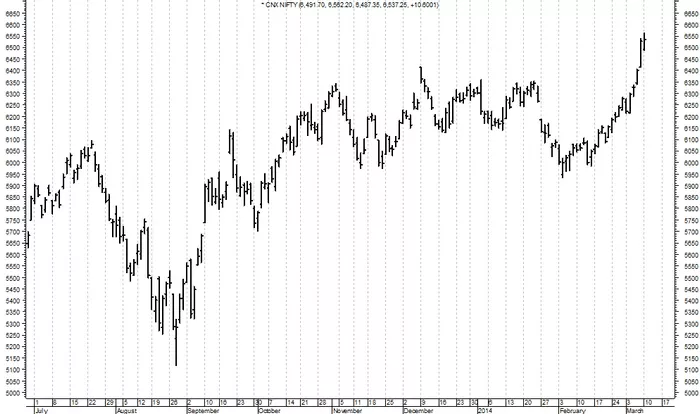In the world of investing, stocks are categorized by their market capitalization, which is the total market value of a company’s outstanding shares. One key category is small cap stocks. Understanding what small cap stocks are, their characteristics, benefits, and risks, is essential for any investor looking to diversify their portfolio. This article provides a comprehensive overview of small cap stocks, explaining their significance in the financial markets.
Understanding Market Capitalization
Before delving into small cap stocks specifically, it’s important to understand the concept of market capitalization and how stocks are categorized.
What is Market Capitalization?
Market capitalization, often referred to as “market cap,” is the total value of a company’s outstanding shares of stock. It is calculated by multiplying the current share price by the total number of outstanding shares.
Formula: Market Cap = Share Price × Total Outstanding Shares
Market cap is used to classify companies into different categories, which helps investors assess the size, risk, and growth potential of these companies.
Categories of Stocks
Stocks are generally classified into three main categories based on market capitalization:
Large Cap Stocks: Companies with a market capitalization of $10 billion or more. They are typically established and stable, offering lower risk but also slower growth.
Mid Cap Stocks: Companies with a market capitalization between $2 billion and $10 billion. They are often in the growth phase and can offer a balance between risk and reward.
Small Cap Stocks: Companies with a market capitalization between $300 million and $2 billion. These companies are generally in the early stages of development and growth.
What Are Small Cap Stocks?
Small cap stocks are shares of companies with a market capitalization between $300 million and $2 billion. These stocks are typically issued by smaller companies that may be in the early stages of growth or operating in niche markets.
Characteristics of Small Cap Stocks
Small cap stocks have several distinctive features:
1. Growth Potential
High Growth Potential: Small cap companies often have significant room for growth. They are usually in the early stages of development and expanding their operations, which can lead to substantial increases in stock value.
Innovation: Small cap companies might be involved in emerging industries or technologies, offering potential for substantial growth if their innovations succeed.
2. Volatility
Price Volatility: Small cap stocks tend to be more volatile than large cap stocks. Their prices can fluctuate widely due to factors such as market sentiment, financial performance, and economic conditions.
Market Sensitivity: Small cap stocks can be more sensitive to market changes and economic conditions, leading to higher volatility compared to larger, more established companies.
3. Limited Resources
Financial Stability: Small cap companies may have limited financial resources compared to their larger counterparts. This can affect their ability to weather economic downturns or invest in growth opportunities.
Access to Capital: Small cap companies might find it more challenging to raise capital through debt or equity financing, which can impact their expansion plans.
4. Market Liquidity
Liquidity Issues: Small cap stocks can experience lower trading volumes, leading to lower liquidity. This means that buying or selling these stocks can impact their market price more significantly.
Wide Bid-Ask Spreads: Due to lower liquidity, small cap stocks often have wider bid-ask spreads, which can increase trading costs for investors.
Benefits of Investing in Small Cap Stocks
Investing in small cap stocks can offer several potential benefits, especially for investors looking for high growth opportunities.
1. High Growth Potential
Rapid Expansion: Small cap companies often have the potential for rapid growth and expansion, which can lead to significant capital appreciation.
Innovative Solutions: Many small cap companies are involved in cutting-edge industries or technologies, offering the possibility of substantial returns if their innovations gain traction.
2. Diversification
Portfolio Diversification: Small cap stocks can add diversification to an investment portfolio. They often have different risk and return characteristics compared to large cap stocks, providing a balance between various types of investments.
Exposure to New Markets: Investing in small cap stocks can give investors exposure to emerging markets or niche sectors that may not be available through larger companies.
3. Acquisition Opportunities
Mergers and Acquisitions: Small cap companies are often targets for mergers and acquisitions by larger companies. Such transactions can lead to significant gains for investors if the small cap company is acquired at a premium.
See Also: Stocks or Mutual Funds: Which Is Better?
Risks Associated with Small Cap Stocks
While small cap stocks offer potential benefits, they also come with risks that investors should be aware of.
1. High Volatility
Price Fluctuations: The prices of small cap stocks can be highly volatile, leading to potential gains or losses. This volatility can be influenced by market conditions, company performance, and investor sentiment.
Economic Sensitivity: Small cap companies may be more sensitive to economic downturns and market fluctuations, which can impact their stock prices.
2. Financial Stability
Limited Resources: Small cap companies may face financial challenges due to their limited resources. They might struggle to access capital or manage operational expenses, affecting their long-term viability.
Higher Risk of Failure: Small cap companies are generally less established and may have a higher risk of failure compared to larger, more stable companies.
3. Market Liquidity
Liquidity Risk: The lower trading volumes of small cap stocks can lead to liquidity issues. This can make it harder to buy or sell shares without affecting the stock price.
Wider Spreads: Small cap stocks often have wider bid-ask spreads, which can increase the cost of trading.
How to Evaluate Small Cap Stocks
Investing in small cap stocks requires careful evaluation to identify promising opportunities and manage risks effectively.
1. Fundamental Analysis
Financial Health: Analyze the company’s financial statements, including revenue, earnings, and cash flow. Assess profitability, debt levels, and financial stability.
Growth Potential: Evaluate the company’s growth prospects, including market potential, competitive advantage, and business strategy. Look for companies with a clear path to expansion and innovation.
2. Industry and Market Trends
Industry Analysis: Assess the industry in which the small cap company operates. Consider factors such as industry growth, competition, and market trends.
Economic Conditions: Consider the broader economic environment and its impact on the company’s performance. Small cap stocks may be more affected by economic fluctuations.
3. Management and Leadership
Leadership Team: Evaluate the experience and track record of the company’s management team. Strong leadership can be crucial for navigating challenges and driving growth.
Corporate Governance: Assess the company’s governance practices and transparency. Good corporate governance can reduce risks and enhance long-term value.
4. Valuation Metrics
Price-to-Earnings (P/E) Ratio: Use the P/E ratio to assess the stock’s valuation relative to its earnings. Compare the P/E ratio to industry peers and historical averages.
Price-to-Book (P/B) Ratio: Evaluate the P/B ratio to determine the stock’s valuation relative to its book value. This can provide insight into whether the stock is overvalued or undervalued.
Investing Strategies for Small Cap Stocks
Investing in small cap stocks requires a strategic approach to maximize potential returns and manage risks.
1. Diversification
Spread Investments: Diversify investments across multiple small cap stocks to reduce risk. Avoid putting too much capital into a single stock or sector.
Sector Allocation: Consider diversifying across different sectors or industries to balance exposure and mitigate sector-specific risks.
2. Long-Term Perspective
Hold Period: Small cap stocks can be volatile in the short term, so a long-term investment horizon can help ride out market fluctuations and capture growth potential.
Patience and Research: Be patient and conduct thorough research before making investment decisions. Small cap stocks may require time to realize their growth potential.
3. Risk Management
Set Stop-Loss Orders: Use stop-loss orders to limit potential losses. Determine a price level at which you will sell the stock to prevent further losses.
Monitor Performance: Regularly review the performance of your small cap investments. Stay informed about company developments, market trends, and economic conditions.
Conclusion
Small cap stocks offer investors opportunities for high growth and diversification, but they also come with higher risks and volatility. Understanding the characteristics, benefits, and risks of small cap stocks is crucial for making informed investment decisions.
By evaluating small cap stocks through fundamental analysis, industry trends, management quality, and valuation metrics, investors can identify promising opportunities while managing risks effectively. Employing diversification, a long-term perspective, and risk management strategies can further enhance the potential for success with small cap investments.
Whether you are an experienced investor or new to the stock market, understanding what makes small cap stocks unique will help you navigate this dynamic sector and make strategic investment choices.
[inline_related_posts title=”You Might Be Interested In” title_align=”left” style=”list” number=”3″ align=”none” ids=”3331,3299,3265″ by=”categories” orderby=”rand” order=”DESC” hide_thumb=”no” thumb_right=”no” views=”no” date=”yes” grid_columns=”2″ post_type=”” tax=””]































